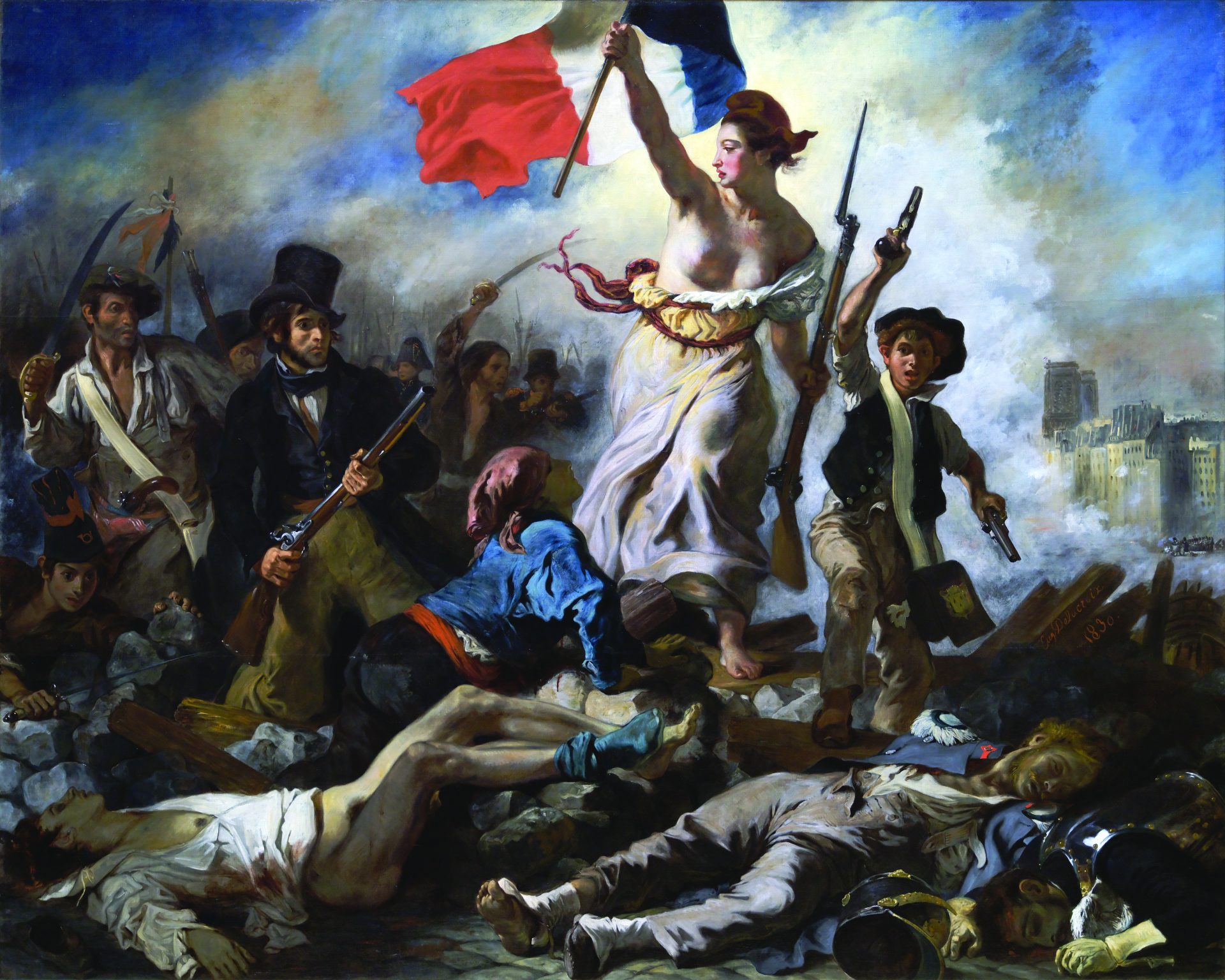
In the beginning, there was a father who craved respectability; he begat a bad boy who enjoyed shocking polite society. The father was Max Gaines, one of the founders of the American comic-book industry and publisher of the early adventures of the Green Lantern and Wonder Woman. Stung by criticisms that comics were corrupting America’s youth, Max rebranded himself as a purveyor of uplifting material, releasing Picture Stories from the Bible in 1942 and soon thereafter starting a firm called Educational Comics. After Max died in 1947, his wayward, mischief-loving son, Bill, took charge of the firm. Unlike his dad, Bill didn’t shy away from the reputation comic books had for sensationalism. EC, which now stood for Entertaining Comics, became a clearinghouse for blood-drenched horror titles such as Tales from the Crypt, as well as for the irreverent Mad. These taboo-breaking comics, sold for a dime to any kid who wanted to read them, provoked a hornet’s nest of censorious opposition.
Although Max and Bill Gaines had antithetical aims, both are precursors to Robert Crumb in his Book of Genesis Illustrated. Like Max, Crumb has returned to the sacred text at the heart of Western civilization, but the result is a comic as unsettlingly drenched in sexualized violence as Tales from the Crypt and as subversively disrespectful to cultural icons as Mad. Those familiar only with the Crumb of the ’60s and ’70s, the sex-obsessed chronicler of Mr. Natural and Fritz the Cat, may be surprised to learn that he has a bookish side. Since the early ’80s, he has been releasing a remarkable series of literary adaptations, faithfully and lovingly based on scenes from works such as James Boswell’s London Journal, Richard von Krafft-Ebing’s Psychopathia Sexualis, Jean-Paul Sartre’s Nausea, and Franz Kafka’s stories. These are all works of literary extremism, focused on scenes of heightened feelings and antisocial behavior. Crumb’s Book of Genesis is the culmination of his Classics Illustrated impulse. As he did in earlier adaptations, the artist embraces a volatile, often abrasive text soaked through with lust and blood.
But The Book of Genesis Illustrated is far more ambitious than Crumb’s previous adaptations, which tended to be only a few pages long. This time, he has tackled a sizable text, all fifty chapters of Genesis, omitting very little (such as “and Bethuel,” on the scholarly grounds that these two words were added by a scribal interloper). The completeness of this version is important, because, as Crumb rightly complains, every other comics adaptation seems to have been streamlined and modernized, often to make the shocking old stories palatable to readers, especially kids. In the rendition of Noah’s story in Picture Stories from the Bible, for instance, no mention is made of Ham seeing his illustrious father naked and earning a curse for the transgression. In the 1975 DC Comics “Limited Collectors’ Edition” of the Bible, the sin of the men of Sodom seems to be that they are too greedy, and any hint of homosexual rape is carefully avoided.
Unlike these bowdlerized versions, Crumb’s doesn’t hide the fact that the holy book is filled with stories of incest (Abraham marrying his half sister, Sarah; Lot being seduced by his daughter), frenzied bloodlust (God’s various acts of mass murder, the terrible slaughter of a village after a young boy seduces Jacob’s daughter, Dinah), and general unsavory behavior (the theme of fraternal violence that runs from the story of Cain and Abel to the concluding saga of Joseph and his spiteful siblings). Images can cut deeper than words, especially when those images are executed by so psychologically alert an artist as Crumb. It’s one thing to read about the daughters of Lot seducing their father in a desperate attempt to repopulate their tribe after the destruction of Sodom; it’s quite another to see Crumb’s depiction of the sodden Lot, his eyes in a daze, straddled by a zaftig Amazon who looks vaguely troubled by her reproductive mission.
Crumb describes his adaptation as being “literal,” a rather loaded word in biblical circles. The idea takes many forms: There is the literalism of the fundamentalist, convinced that the Bible is the inerrant and inspired word of God, but there is also the literalism of modern scholars and translators, who use archaeology and philology to uncover what the words in this ancient text meant. In striving to be literal, Crumb has leaned heavily on Robert Alter’s 2004 translation, which hews to the Hebrew text. Yet in his attempt to mimic the syntax and formal diction of biblical Hebrew, Alter occasionally sounds stilted. Crumb has in some instances wisely rewritten him or reverted to earlier translations in the interest of fluency. Alter’s Jacob rhetorically asks his wife, Rachel, “Am I instead of God, Who has denied you fruit of the womb?” Crumb’s Jacob talks more plainly: “So, then, it’s me, not God, who has denied you fruit of the womb!?” The exclamation mark is a nice touch, in keeping with Crumb’s tendency to use the exaggerated effects of the cartooning tradition (such as the sweat drops that issue profusely from his characters whenever they exert themselves).
In general, Crumb’s tendency is to simplify Alter and bring the text closer to the vernacular. But being literal is not the same as being impartial or withholding interpretation. The language of Genesis is extremely terse and suggestive, opening itself up to countless retellings. Crumb’s personal views are bodied forth in his drawings, which frequently undermine or question the text. The words alone tell us nothing about how Dinah reacted to the murder of her sexual assailant (and would-be husband), Shechem, but a heartrending panel by Crumb suggests the possibility that the vengeance was far greater than anything she wanted. Surprisingly, given his reputation as the chief sexist of underground comics, Crumb has taken a strongly feminist slant on Genesis. Influenced, as he notes in the commentary, by scholars like Savina Teubal, Crumb sees within the book a struggle between two religious systems: the familiar patriarchal God of the fathers (whose story runs from Abraham to Isaac to Jacob to Joseph) existing side by side with a covert matrilineal traditional of powerful women (including Sarah, Rebekah, and Rachel).
Following Teubal, Crumb places considerable emphasis on a puzzling tale found in chapter 12, where Abraham and Sarah travel to Egypt. He tells her to hide the fact that she’s his wife and say she’s his sister. Following these instructions, Sarah lives inside Pharaoh’s house, and possibly as a result of this arrangement, Abraham prospers. But then Pharaoh is cursed by a plague and discovers the truth, leading him to cast Abraham and Sarah out of Egypt. (This tale is twice reworked in Genesis, once with Abraham and Sarah again pretending to be only siblings, and once with Isaac and Rebekah doing the same.) Teubal makes sense of these bizarre stories by positing that Sarah and Rebekah had social roles akin to priestesses in other ancient civilizations. As such, they would have been allowed to enter into temporary sacred marriages with powerful men, such as Pharaoh, as a means of building tribal alliances. If these marriages or alliances proved inauspicious, they would have been broken. While speculative, Teubal’s analysis is deeply suggestive and allows Crumb to give an added emotional charge to his interpretation. In his account, the sacred marriage is almost an act of pimping: Sarah is stiff with anger and weeps when she hears what Abraham wants of her. Interestingly, Crumb follows Teubal rather than Alter in describing Hagar as a “handmaid” rather than a “slavegirl,” in keeping with the aim of seeing the biblical matriarchs as agents in their destinies instead of passive victims of male domination.
As presented in the Bible, the characters in Genesis have no internal lives: We see them speak and act, with little sense of their motivations. When a primary character (God or one of the patriarchs) speaks at length, we can only guess at how the words were received. Crumb’s major interpretive act is to offer reaction shots to this biblical speech making. When God tells Noah that divine justice demands the destruction of almost all life on earth, the poor farmer is aghast. In chapter 35, Jacob calls on the members of his household to cleanse themselves and destroy their idols. The text is silent about their reactions, but Crumb shows the women of the family quietly crying as they hand over their beloved objects.
Among its many riches, Genesis is a book about bodies, a book where men and women constantly grapple with one another, where a servant swears an oath by putting his hand under his master’s thigh, where even angels are threatened with sexual violation. Crumb has long been the preeminent cartoonist of the body. His women are notoriously full-figured, with ample butts and protruding nipples (a motif he uses in this book). But more significantly, the bodies he draws—whether they are quivering or standing still, dancing or drooping—have a visceral impact few artists can match. That’s why he was the perfect cartoonist to illustrate the Book of Genesis, a fitting capstone to a great career.
Jeet Heer is a Toronto-based cultural journalist and the editor of numerous collections of classic comic strips.






